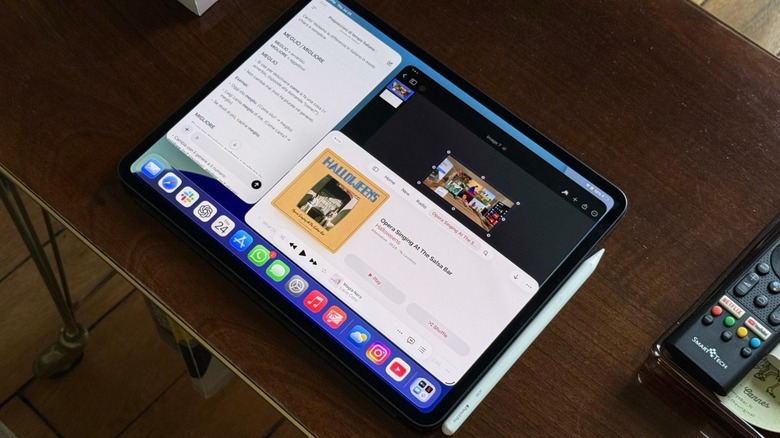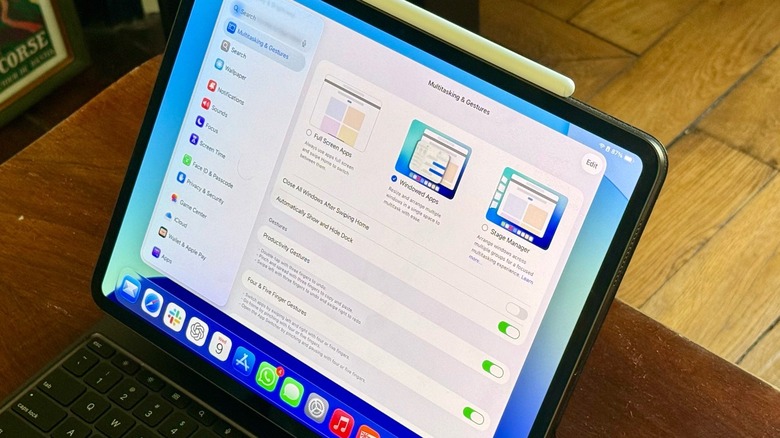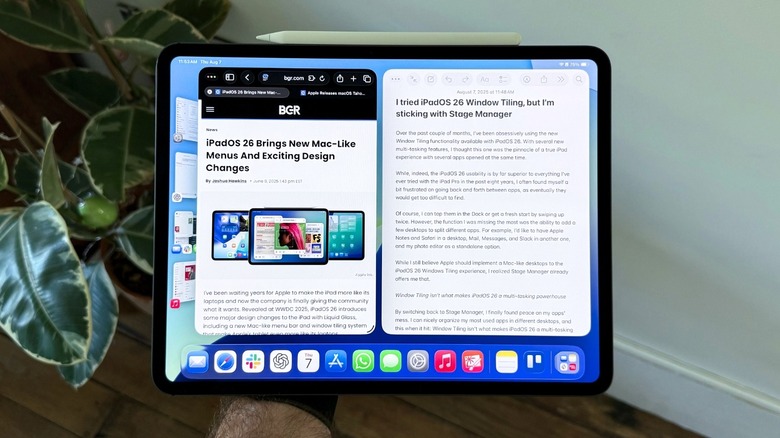After Trying Window Tiling On iPadOS 26, I'm Sticking With Stage Manager
Over the past couple of months, I've been obsessing over the new window tiling functionality available with iPadOS 26. Of all the new productivity features in the update, this look like the one that would actually turn the iPad into a legitimate threat to the MacBook. While, indeed, the iPadOS 26 usability is by far superior to everything I've ever tried with the iPad Pro in the past eight years, I often found myself a bit frustrated when going back and forth between apps, as eventually they would become too difficult to find.
Of course, I can tap them in the Dock or get a fresh start by swiping up twice. However, the feature I was missing the most was the ability to create multiple desktops to split different apps between. For example, I'd like to have Apple's Notes app and Safari on one desktop, Mail, Messages, and Slack in another, and my photo editor on its own standalone desktop. While I still believe Apple should bring Mac-like desktops to the iPadOS 26 window tiling experience, I realized Stage Manager already offers that.
Window tiling isn't what makes iPadOS 26 a multi-tasking powerhouse
By switching back to Stage Manager, I finally found a way to manage all of my apps effectively. I can organize my most used apps in different desktops, and that's when it hit me: Window tiling isn't what makes iPadOS 26 a multi-tasking powerhouse. Instead, it's everything else that Apple added to iPadOS 26 — specifically, these new features and upgrades:
- Background apps revamp: Even if an app is in the background, it can still continue to export a video, download a file, and perform a task. That wasn't possible in with iPadOS 18.
- Preview app: The new Preview app makes it easier to edit a PDF, sign a document, or sketch a picture. We already did a hands-on with this app, and it truly makes a difference on iPadOS 26.
- Files app: The Files app has an updated list view, the ability to resize columns, and the option to customize the color of folders. Now, every opened document goes to Preview, which is a breeze to navigate.
- Mac-like menus and buttons: iPadOS 26 adds Mac-like menus, so every app features the classic "Files," "Edit," "Format," and "View" options at the top of the display. Also, there are new buttons to minimize, maximize, or close an app.
- Apple Intelligence: Apple has deepened the integration with ChatGPT, offering onscreen awareness when using Apple's AI with OpenAI models. There are even more AI features coming to the tablet as well.
Stage Manager is familiar, but much more useful
While Apple could ultimately merge window tiling and Stage Manager into a single experience — as long as the company addresses the lack of desktops — users will likely be jumping between these two multitasking capabilities after upgrading to iPadOS 26 before settling on one. While everyone should try window tiling before deciding whether to go back to Stage Manager, the latter might be the better option for most users. After two months, I still think Stage Manager is the best way to take full advantage of the 13-inch display of the M4 iPad Pro.
That said, I would not recommend Stage Manager on the Mac, as the original experience is already good enough. For the iPad, though, Apple did a remarkable job of offering different ways to view and interact with every app you have opened. In addition, a handy menu can help you resize your apps if you're having trouble organizing them on your display.
With that in mind, if you're skipping the iPadOS 26 public beta, it's just about time to take your iPad and Magic Keyboard out of the drawer and give them another try. iPadOS 26 truly changes everything.


